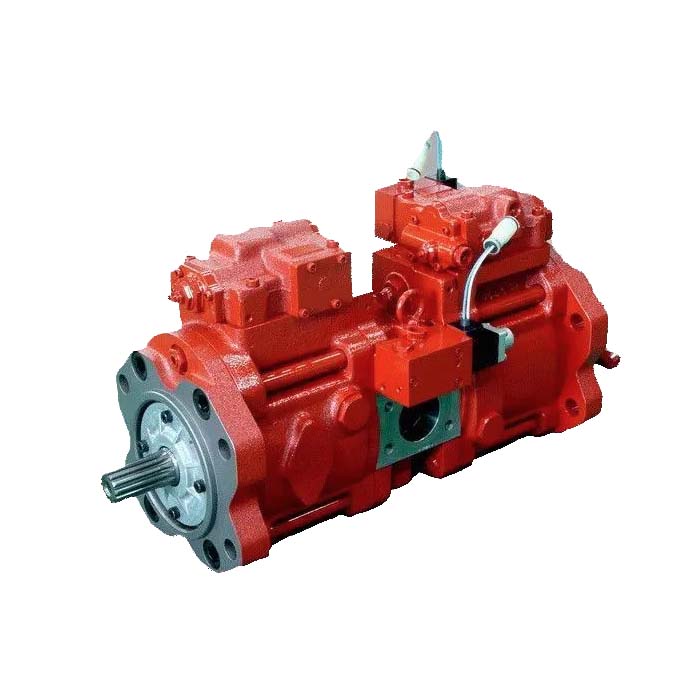Why Is Your Hydraulic Pump Overheating
Is your hydraulic pump getting excessively hot during normal operation?
Pumps do generate heat when running, however they are designed with specific
heat parameters in mind. Overheating is an abnormal condition that leads to
destructive issues such as thinning of hydraulic fluid, which leads to reduced lubrication,
metal-on-metal contact of moving parts. And accelerated pump wear and failure.
Therefore it is never a good idea to ignore a pump that is exceeding its heat parameters under normal load.
There are a number of factors that contribute to an excess buildup of heat
and in this article, we'll explain some of these issues.
Incorrect Hydraulic Fluid Viscosity:
The viscosity of hydraulic fluid is crucial for the proper operation of the pump.
The fluid not only transmits power but also lubricates internal components and
removes heat from the system. If the hydraulic fluid viscosity is incorrect,
it can lead to overheating. When the fluid heats up, it becomes thinner and
loses its ability to lubricate moving parts effectively. This increased friction
can cause the pump to heat up and result in increased wear.
Conversely, if the hydraulic fluid is too thick,
it Flows less efficiently, leading to heat buildup.
Contaminated Hydraulic Fluid:
Contaminated hydraulic fluid, containing dirt, debris, water, or other impurities,
can contribute to heat buildup in several ways. Blocked fluid filters, pipes,
and strainers place an excessive load on the pump and may even
cause pressure drops that result in cavitation.
Oil Starvation:
Low fluid levels can lead to insufficient flow reaching critical hydraulic components
and moving parts, known as oil starvation. Similar to running a car without oil,
this condition increases metal-on-metal friction, resulting in increased heat and wear.
Oil starvation can also occur due to clogged hydraulic filters or incorrect fluid reservoir design.
Cavitation:
Cavitation is the rapid formation and collapse of air cavities in the hydraulic fluid.
When these air cavities collapse under pressure, they generate significant heat.
In fact, temperatures at the point of implosion can reach up to 2700 degrees Celsius!
Cavitation not only compromises the lubrication properties of the oil but also causes excessive heat,
leading to damage to the hydraulic pump and the entire system.
It can attack hoses and seals and cause expansion and wear of metal components.
Aeration:
Aeration occurs when air enters the system through leaks at points like pump seals and pipe fittings.
Compression occurs in a hydraulic system when air is present. Air generates heat when compressed,
leading to an increase in temperature if not addressed.
In extreme cases, it can even cause hydraulic dieseling, where compressed air bubbles
explode similarly to the process that powers diesel engines. This degradation of the
fluid and damage to system components occur through loss of lubrication and burning of seals.
Normal Wear:
As pumps wear, internal leakage or "slippage" increases.
Fluid can pass through tight-fitting components, reducing the pump's efficiency.
As this occurs, the fluid moves from high pressure to low pressure without performing mechanical work.
According to the laws of physics, energy cannot be destroyed but is instead converted into heat.
Saivs brand
- hydraulic winch with free lowering function
- Scissor Table Lift
- Off-shore Jacking cylinder
- rexroth 4wrze10 4wrze16 4wrze25 4wrze32 series electro-hydraulic proportional directional valve
- Rexroth 4WREE6 4WREE10 Series proportional directional valve
- A4V40~250/A4VFO28/A4VSO40~500 Rexroth Hydraulic Pump Parts
- Sai GM2 Radial Piston Hydraulic Motor for Rail Machinery Piston Motor
- PAVC Parker Hydraulic pump
- Ultra-Low Pulse Vickers Eaton Double 20V Vane Pump
- A2VK SERIES Rexroth Hydraulic Pump Parts
